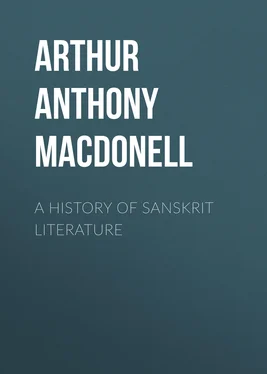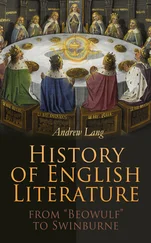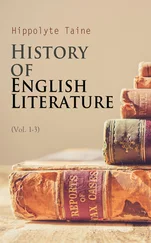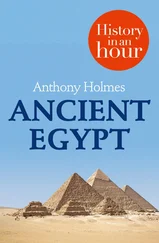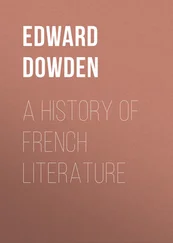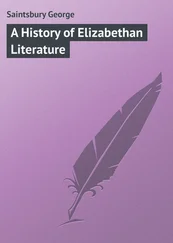Arthur Anthony MacDonell - A History of Sanskrit Literature
Здесь есть возможность читать онлайн «Arthur Anthony MacDonell - A History of Sanskrit Literature» — ознакомительный отрывок электронной книги совершенно бесплатно, а после прочтения отрывка купить полную версию. В некоторых случаях можно слушать аудио, скачать через торрент в формате fb2 и присутствует краткое содержание. Жанр: foreign_prose, foreign_antique, на английском языке. Описание произведения, (предисловие) а так же отзывы посетителей доступны на портале библиотеки ЛибКат.
- Название:A History of Sanskrit Literature
- Автор:
- Жанр:
- Год:неизвестен
- ISBN:нет данных
- Рейтинг книги:5 / 5. Голосов: 1
-
Избранное:Добавить в избранное
- Отзывы:
-
Ваша оценка:
- 100
- 1
- 2
- 3
- 4
- 5
A History of Sanskrit Literature: краткое содержание, описание и аннотация
Предлагаем к чтению аннотацию, описание, краткое содержание или предисловие (зависит от того, что написал сам автор книги «A History of Sanskrit Literature»). Если вы не нашли необходимую информацию о книге — напишите в комментариях, мы постараемся отыскать её.
A History of Sanskrit Literature — читать онлайн ознакомительный отрывок
Ниже представлен текст книги, разбитый по страницам. Система сохранения места последней прочитанной страницы, позволяет с удобством читать онлайн бесплатно книгу «A History of Sanskrit Literature», без необходимости каждый раз заново искать на чём Вы остановились. Поставьте закладку, и сможете в любой момент перейти на страницу, на которой закончили чтение.
Интервал:
Закладка:
In the oldest period of Prākrit, that of the Pāli Açoka inscriptions and the early Buddhistic and Jain literature, two main dialects, the Western and the Eastern, may be distinguished. Between the beginning of our era and about 1000 A.D., mediæval Prākrit, which is still synthetic in character, is divided into four chief dialects. In the west we find Apabhraṃça (“decadent”) in the valley of the Indus, and Çaurasenī in the Doab, with Mathurā as its centre. Subdivisions of the latter were Gaurjarī ( Gujaratī ), Avantī (Western Rājputānī ), and Mahārāshṭrī (Eastern Rājputānī ). The Eastern Prākrit now appears as Māgadhī , the dialect of Magadha, now Behar, and Ardha-Māgadhī (Half-Māgadhī), with Benares as its centre. These mediæval Prākrits are important in connection with Sanskrit literature, as they are the vernaculars employed by the uneducated classes in the Sanskrit drama.
They are the sources of all the Aryan languages of modern India. From the Apabhraṃça are derived Sindhī , Western Panjābī , and Kashmīrī ; from Çaurasenī come Eastern Panjābī and Hindī (the old Avantī ), as well as Gujaratī ; while from the two forms of Māgadhī are descended Marāṭhī on the one hand, and the various dialects of Bengal on the other. These modern vernaculars, which began to develop from about 1000 A.D., are no longer inflexional languages, but are analytical like English, forming an interesting parallel in their development from ancient Sanskrit to the Romance dialects in their derivation from Latin. They have developed literatures of their own, which are based entirely on that of Sanskrit. The non-Aryan languages of the Dekhan, the Dravidian group, including Telugu, Canarese, Malāyalam, and Tamil, have not indeed been ousted by Aryan tongues, but they are full of words borrowed from Sanskrit, while their literature is dominated by Sanskrit models.
Chapter II
The Vedic Period
On the very threshold of Indian literature more than three thousand years ago, we are confronted with a body of lyrical poetry which, although far older than the literary monuments of any other branch of the Indo-European family, is already distinguished by refinement and beauty of thought, as well as by skill in the handling of language and metre. From this point, for a period of more than a thousand years, Indian literature bears an exclusively religious stamp; even those latest productions of the Vedic age which cannot be called directly religious are yet meant to further religious ends. This is, indeed, implied by the term “Vedic.” For veda , primarily signifying “knowledge” (from vid , “to know”), designates “sacred lore,” as a branch of literature. Besides this general sense, the word has also the restricted meaning of “sacred book.”
In the Vedic period three well-defined literary strata are to be distinguished. The first is that of the four Vedas, the outcome of a creative and poetic age, in which hymns and prayers were composed chiefly to accompany the pressing and offering of the Soma juice or the oblation of melted butter ( ghṛita ) to the gods. The four Vedas are “collections,” called saṃhitā , of hymns and prayers made for different ritual purposes. They are of varying age and significance. By far the most important as well as the oldest—for it is the very foundation of all Vedic literature—is the Rigveda , the “Veda of verses” (from ṛich , “a laudatory stanza”), consisting entirely of lyrics, mainly in praise of different gods. It may, therefore, be described as the book of hymns or psalms. The Sāma-veda has practically no independent value, for it consists entirely of stanzas (excepting only 75) taken from the Rigveda and arranged solely with reference to their place in the Soma sacrifice. Being meant to be sung to certain fixed melodies, it may be called the book of chants ( sāman ). The Yajur-veda differs in one essential respect from the Sāma-veda , It consists not only of stanzas ( ṛich ), mostly borrowed from the Rigveda , but also of original prose formulas. It resembles the Sāma-veda , however, in having its contents arranged in the order in which it was actually employed in various sacrifices. It is, therefore, a book of sacrificial prayers ( yajus ). The matter of this Veda has been handed down in two forms. In the one, the sacrificial formulas only are given; in the other, these are to a certain extent intermingled with their explanations. These three Vedas alone were at first recognised as canonical scriptures, being in the next stage of Vedic literature comprehensively spoken of as “the threefold knowledge” ( trayī vidyā ).
The fourth collection, the Atharva-veda , attained to this position only after a long struggle. Judged both by its language and by that portion of its matter which is analogous to the contents of the Rigveda , the Atharva-veda came into existence considerably later than that Veda. In form it is similar to the Rigveda , consisting for the most part of metrical hymns, many of which are taken from the last book of the older collection. In spirit, however, it is not only entirely different from the Rigveda , but represents a much more primitive stage of thought. While the Rigveda deals almost exclusively with the higher gods as conceived by a comparatively advanced and refined sacerdotal class, the Atharva-veda is, in the main, a book of spells and incantations appealing to the demon world, and teems with notions about witchcraft current among the lower grades of the population, and derived from an immemorial antiquity. These two, thus complementary to each other in contents, are obviously the most important of the four Vedas. As representing religious ideas at an earlier stage than any other literary monuments of the ancient world, they are of inestimable value to those who study the evolution of religious beliefs.
The creative period of the Vedas at length came to an end. It was followed by an epoch in which there no longer seemed any need to offer up new prayers to the gods, but it appeared more meritorious to repeat those made by the holy seers of bygone generations, and handed down from father to son in various priestly families. The old hymns thus came to be successively gathered together in the Vedic collections already mentioned and in this form acquired an ever-increasing sanctity. Having ceased to produce poetry, the priesthood transferred their creative energies to the elaboration of the sacrificial ceremonial. The result was a ritual system far surpassing in complexity of detail anything the world has elsewhere known. The main importance of the old Vedic hymns and formulas now came to be their application to the innumerable details of the sacrifice. Around this combination of sacred verse and rite a new body of doctrine grew up in sacerdotal tradition, and finally assumed definite shape in the guise of distinct theological treatises entitled Brāhmaṇas , “books dealing with devotion or prayer” ( brahman ). They evidently did not come into being till a time when the hymns were already deemed ancient and sacred revelations, the priestly custodians of which no longer fully understood their meaning owing to the change undergone by the language. They are written in prose throughout, and are in some cases accented, like the Vedas themselves. They are thus notable as representing the oldest prose writing of the Indo-European family. Their style is, indeed, cumbrous, rambling, and disjointed, but distinct progress towards greater facility is observable within this literary period.
Читать дальшеИнтервал:
Закладка:
Похожие книги на «A History of Sanskrit Literature»
Представляем Вашему вниманию похожие книги на «A History of Sanskrit Literature» списком для выбора. Мы отобрали схожую по названию и смыслу литературу в надежде предоставить читателям больше вариантов отыскать новые, интересные, ещё непрочитанные произведения.
Обсуждение, отзывы о книге «A History of Sanskrit Literature» и просто собственные мнения читателей. Оставьте ваши комментарии, напишите, что Вы думаете о произведении, его смысле или главных героях. Укажите что конкретно понравилось, а что нет, и почему Вы так считаете.
